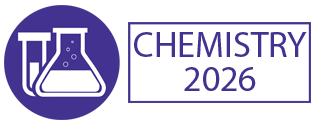Title : Time domain NMR: A new paradigm in process control for sodium in foods and beverages
Abstract:
Time‑Domain Nuclear Magnetic Resonance (TD‑NMR), also called NMR relaxometry, is a low‑field, compact, benchtop form of NMR widely used in industry. New breakthroughs in the production of low-cost, high-quality magnets have allowed this technology to become affordable for process control in the food and beverage industry, NMR relies on detecting nuclear spins (typically ^1H) in a magnetic field via radiofrequency pulses. Traditional high‑field NMR transforms signals into a chemical‑shift spectrum. TD‑NMR instead directly analyzes the time decay (Free Induction Decay, FID, or spin echoes), distinguishing components by their relaxation times (e.g. T₂) without needing a homogeneous, high‑field magnet. TD‑NMR measures intact food samples with no chemical extraction, solvents, or sample destruction needed. Traditional methods for sodium (e.g. titration, flame photometry, ion chromatography) require digestion or acid extraction, consuming time and generating hazardous waste. Analysis takes seconds versus minutes or hours for conventional lab methods like titration or oven drying. The rapid throughput enables real‑time inline or at‑line monitoring on production lines This allows immediate adjustment of processing parameters (e.g. seasoning levels, brine dosing), minimizing out‑of‑spec waste. TDNMR requires minimal sample prep and utilizes no reagents resulting in elimination of hazards and waste. Once the matrix is determined and the proper stored program is executed calibration is not needed and simple verification is all that is required.
TDNMR offers a variety of key advantages over current standard methods for food analysis. Non‑destructive, no sample prep eliminating extraction or solvent waste. Ultra-fast results enable inline or at-line control. High reproducibility Consistent, operator‑independent results with low variability. Low‑cost, easy to operate Benchtop design, no reagents, minimal operator training required. Sustainable No chemicals, minimal energy use, negligible waste generation. Industry ready Automatable or on-line, cloud‑connected, supports real‑time process control and analytics. Multi‑component capability Can simultaneously measure a variety of parameters besides sodium.
In this presentation the basics of NMR are presented as well as examples from a number of real-world deployments in a variety of matrices (salty snacks, condiments, soda, sports drinks, meat and fish) showing the efficacy and cost saving potential of this new technology.



